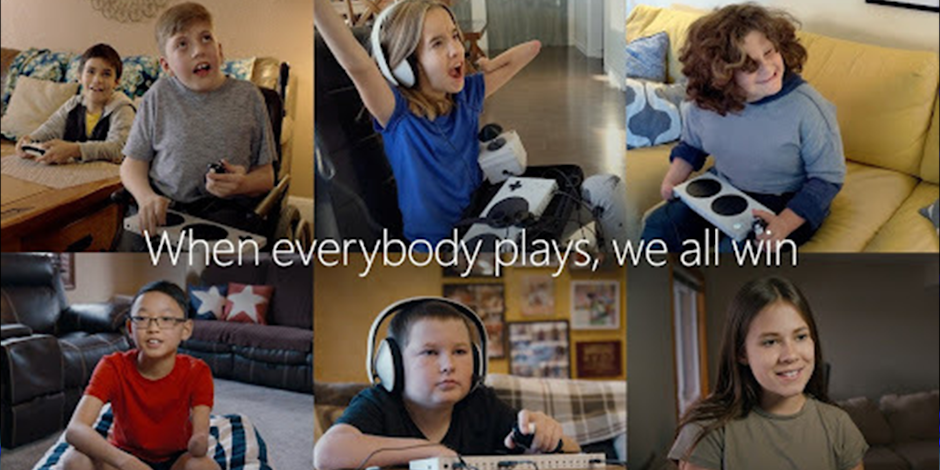Championing diversity and inclusion within the games industry
Gaming has become deeply rooted in the lives of billions across the globe, with the audience representing people from all cultures, backgrounds, genders, ethnicities, and ages

Last month, Natalia Vasilyeva, VP marketing at Anzu, and Julia Rast, senior global solutions and innovation manager at Xaxis, joined forces during an Anzu Spotlight webinar to explore the hugely diverse gaming audience.
The pair touched upon the different opportunities it presents to advertisers, how gaming has become an outlet and an encouragement for many to be who they want to be, and what needs to be done to ensure diversity and inclusion are represented throughout the industry.
How do we ensure diverse representation in games?
Julia believes that the real world is no different from the gaming world, “we have the same social issues in gaming, we see the same political forces, and there are the same cultural nuances. Previously it was mainly indie games that had the flexibility and freedom to create games that are catered to marginalized groups or to tackle large topics that bigger game studios didn’t want to touch.”
She went on to say that this is changing, and we are seeing AAA games from big studios like Naughty Dog’s The Last Of Us 2, which has a transgender character - Lev - played by Ian Alexander, who is transgender in real life. “Having someone who can relate to the character they are playing makes the experience all the more realistic. It’s not only the right thing to do, but so many people around the world will relate to the character meaning the game will attract new fans who will connect with the franchise.”
Character designs for Lev and Yara at the Last of Us 2 presentation. Credit: ESA
In an interview, Ian Alexander said that he’d had messages and support from so many fans after the game’s release, with one even coming out to him during a signing. “I remember seeing how their face lit up the moment that they saw the transgender symbol necklace I was wearing,” Alexander explained. “It makes me smile to be able to provide authentic transmasculine representation for other people like me.”
How can industry players make gaming more inclusive and diverse?
Natalia believes we need to ensure diverse representation across the board with regards to the characters and avatars available to players. Still, we also need diverse game designers, actors, and developers.
Julia added that we need to make gaming accessible for everyone who wants to play games, both economically and physically, because the hardware is expensive. “You can’t expect people on a small budget to be able to buy the hardware to play certain types of games or to improve their skills, let alone continually buy the latest releases of new types of hardware.”
“Decision-makers need to provide access to people on a smaller budget. That’s something that needs to change to make the industry more inclusive. Accessibility is also important. A lot of people who have disabilities weren’t able to play gaming on a level that nondisabled people could. Microsoft is leading the charge in this area. It has developed several iterations of its Xbox controls which allow people who have a disability to plug in different devices to be able to play and compete against others at the same level.”
Natalia Vasilyeva (left) and Julia Rast (right)
Natalia responded, stating that “the free-to-play model contributes a lot to accessibility and affordability. Charging everyone $60 for one title may not work, which is why many platforms have adopted subscription models. When done right, I think advertising in games can contribute to making games more accessible and enjoyable for the masses. We’ve seen great examples of this happening from some of the world’s biggest gaming franchises, from Call Of Duty to Pokemon.”
How do we steer the industry in the right direction?
81% of multiplayer gamers have confessed they experience harassment while playing. Natalia outlined that this is a huge and shocking number, and the industry should take note and come together to do something about it.
Julia responded, saying, “the industry is moving forward and changing, but I don’t think it’s moving fast enough. If it doesn’t move faster, I think we will begin to see more players stand up against it and raise their voices to let us know we are not doing enough to combat things like inequality, racism, and harassment, so it’s essential for brands to start doing this.”
We’ve already begun to see this happen recently with the #TwitchDoBetter campaign. Twitch is a platform that lets people watch others playing games and allows them to comment on people’s streams. There has recently been a lot of racial hatred on the platform. Because Twitch has not done enough to stop it, many of its users have begun standing up against the hate by rallying together behind the campaign’s hashtag and calling for change, signaling to Twitch that they need to do more or else they will find somewhere else to stream.
To hear more on the impact of diverse representation within video games, head here to watch the Anzu Spotlight webinar in full.

